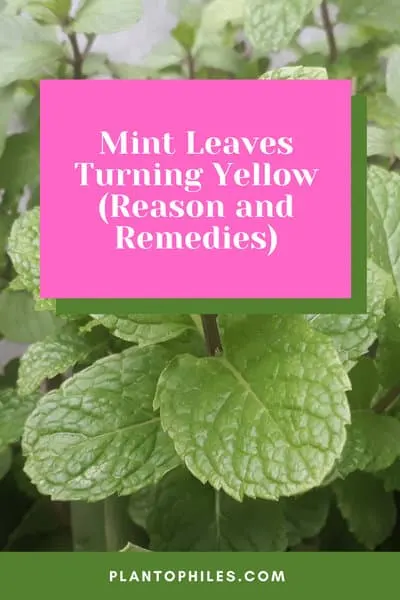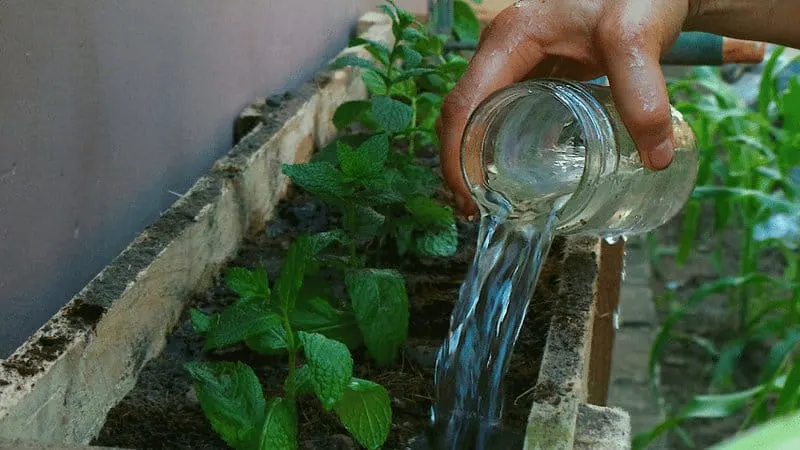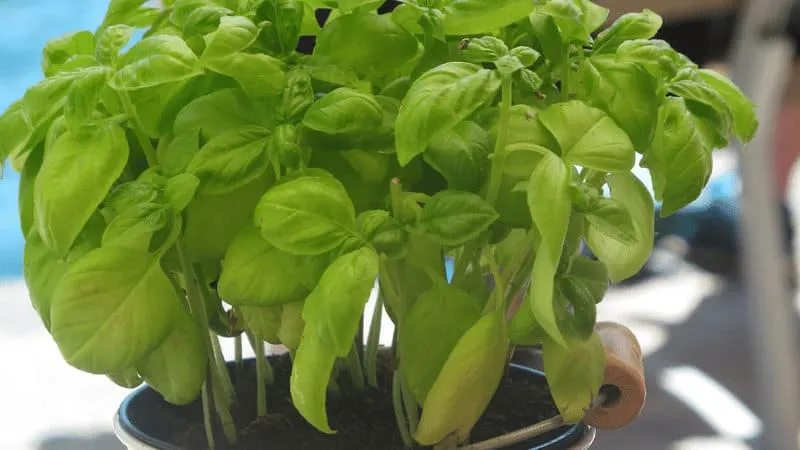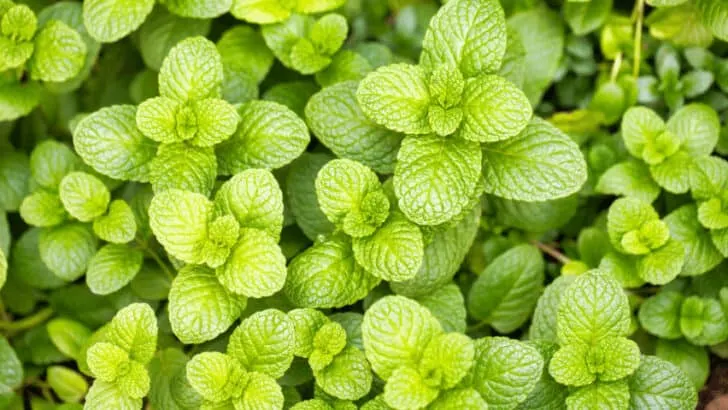You are reading this article because your mint leaves are turning yellow.
Mint leaves belong to the Lamiaceae family. This family consists of more than 7000 species, according to the University of Florida. When mint leaves are yellowing, something might be wrong.
Mint Leaves Turning Yellow
Mint leaves can turn yellow because of inadequate water or overwatering. The leaves can turn yellow for reasons like the plant not getting enough nitrogen, excessive sunlight, insect or pest problems, and fungal or bacterial infections.

Table of Contents
Some Major Causes of Mint Leaves Turning Yellow
Overwatering
One of the significant causes of mint leaves turning yellow is overwatering. A lot of water in the soil can lead to many problems.
Moist soil can lead to root rot in plants. The plants cannot aerate properly through the roots, and this problem is indicated by the leaves turning yellow.
If the mint leaves are growing in pots, then the pots may have insufficient drainage, due to which moisture is retained in the soil.

Excessive Sunlight
Most plants prefer to grow in adequate sunlight. However, mint leaves like to grow in the shade. Mint leaves can dry out or damage in excessive heat.
Overexposure to sunlight is the major reason that causes the leaves to turn brown or yellow. This is known as scorching, in which the plants burn due to exposure to sunlight.

Verticillium Wilt Fungus
Certain fungal diseases can cause the plant to change color to yellow. Verticillium wilt fungus is one of the leading causes of the leaves turning yellow in color.
Firstly, the margin of the leaves starts changing its color. Eventually, the leaves bend, then wilt and die.
Excessive use of fertilizer can also cause this disease.

Aphids Can Cause the Yellowing of Leaves
Aphids are tiny insects that can be of yellow, brown, or green in color. These insects eat the leaves that accumulate on the stems and beneath the leaves.
An aphid attack can cause the leaves to turn yellow. Aphid infestation can cause the leaves to curl and lead to stunted plant growth.
Sooty molds grow on the mint leaves when the insects release some sticky substance. They release honeydew as well.

Rust Attack
Mint can be affected by rust. Rust can cause mint leaves to wilt and stunt their growth. Blisters appear at the bottom of the leaves.
The leaves then change their color to yellow and eventually fall off. The color of the spots can be orange, brown, or yellow.
The leaf tissue dies, and the leaves of the plant fall off. Even the new mint leaves grow pale or distorted due to rust attack.
Spider Mite Infestation
The spider mite is the potential cause of mint leaves turning yellow.
During dry conditions, when the plant is not receiving an adequate amount of water, stimulates spider mites to attack as these pests appear in dry conditions.

Remedies For Yellow Mint Leaves
- To prevent root rot due to water retention, ensure the plant is kept in well-drained soil. Mint leaves only require 1 inch of water weekly.
- To prevent verticillium wilt, rotate the plants. With that, do not use excessive fertilizers as this may also cause this fungal infection. To prevent the spread of the disease, remove and destroy the infected plant.
- Various insecticidal soaps can be used to get rid of the aphids immediately. Organic insecticides, including soap mixtures, can be used to control aphids. Moreover, you can trim the stems of the plants to get rid of them.
- Use sugar, straw, or bark mulch as a thick layer around the plant. As a result, the roots will remain insulated, and the soil will stay moist.
- With that, weeds will not grow when the plants are mulched. Weeds take nitrogen, and the leaves turn yellow. Provide ample water to the plant to keep it firmly in its place.
- Provide the mint leaves with nitrogen-based liquid fertilizers, for example, seaweed solution, fish emulsion, etc.
- Fix the humidity of the environment in which the plant is growing.
- You can repot your mint plant to make the plant grow well and prevent the yellowing of the leaves.
- Use fungicide sprays to spray on the infected plants and the surrounding areas. You can also inoculate the soil with fungicides.
What to do when mint leaves turn yellow?
The most common remedies for mint leaves turning yellow are to provide them with slow-release nitrogen-rich fertilizers like pelleted chicken manure to give them a nitrogen boost. Keep trimming the dried and dormant mint leaves, control pest infestation, and provide them with adequate water and sunlight. These remedies will help you keep your plant green and healthy.
Read about the best mint companion plants next.
FAQ
Can we eat yellow mint leaves?
You can eat yellow mint leaves which have turned yellow due to sunburn.
They may not taste very well. However, if any fungal disease causes the yellowing of the leaves, then you should avoid eating it.
Why are my mint leaves turning white?
Mint leaves can turn white due to two main reasons. Firstly, it may be caused due to the presence of bugs like spider mites.
Secondly, it may be due to the presence of powdery mildew. When the leaves are facing a lack of humidity, then powdery mildew appears on the plant.
What is the importance of mint leaves?
The anti-inflammatory properties can help you to reduce inflammation in the stomach.
Mint leaves contain calcium, phosphorous, and Vitamin A, C, D, and E, enhancing the immune system.
Mint leaves relieve indigestion and are beneficial in fighting against acne and blemishes.
Conclusion About Mint Leaves Turn Yellow
Mint Leaves Turn Yellow because of overwatering and underwatering, the plant not getting enough nitrogen, pest problems, too much sunlight, or fungal and bacterial infections.

Daniel has been a plant enthusiast for over 20 years. He owns hundreds of houseplants and prepares for the chili growing seasons yearly with great anticipation. His favorite plants are plant species in the Araceae family, such as Monstera, Philodendron, and Anthurium. He also loves gardening and is growing hot peppers, tomatoes, and many more vegetables.


